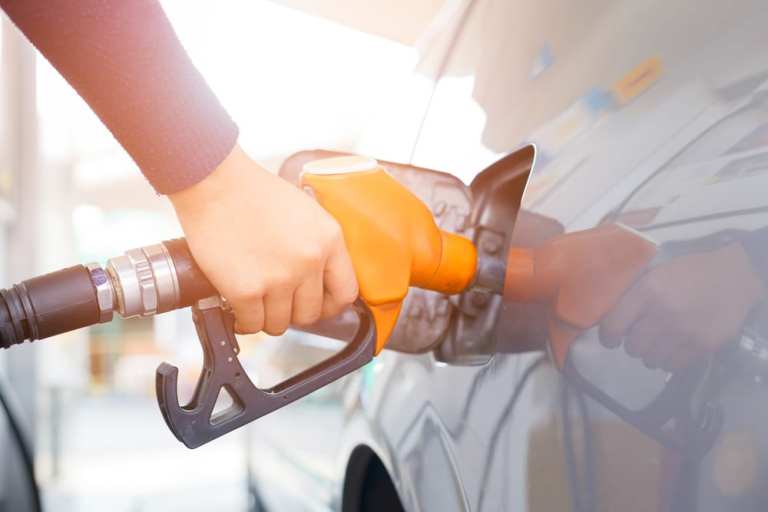
EMV seems to be that payments issue that just won’t go away, but not in the U.S., where at least one vital and robust sector of commerce has yet to adopt the global security standard en masse. We are talking about gas stations and convenience stores, with their EMV liability shift pushed back to Oct. 1, 2020 — at one point, the deadline was in 2017.
It’s not hard to find experts who predict that, even with the new date, gas stations will fail to comply with the deadline, which is set by card networks. However, that’s only part of what’s really going on when it comes to this particular card payments mark for convenience stores and gas pumps, according to a new PYMNTS interview with Chris Triconi, director of petro, convenience stores, and fuel retail at payment technology firm LISNR. No matter what happens with the deadline (one can expect bigger operators to generally meet it, while a good number of mom-and-pop operations will not, he said), the new date provides fresh opportunity for convenience stores and gas stations to become better at customer experience and engagement.
Before getting into that, though, it pays to understand what’s going on with the EMV deadline in this specific area of retail to get a good sense of context. The number of EMV payment cards in circulation around the world stands at more than 7.1 billion, according to EMVCo — the organization charged with maintaining the standard, and which is collectively owned by American Express, Discover, JCB, Mastercard, UnionPay and Visa. After a long wait (other countries tended to adopt the standard more quickly than the U.S.), consumers in this U.S. are indeed performing more EMV-backed transactions every day.
Big And Small
However, that’s not necessarily the case at U.S. gas pumps.
In general, according to Triconi, operators of gas stations have been waiting on EMV, at least in part, because they are waiting on new EMV-backed technology that costs less than previous devices, and carries less risk of having to rebuild pumps or other parts of the gas station to install and deploy.
“The big [operators] have financial balance sheets that can support construction projects,” he told PYMNTS, “but the smaller ones will be challenged.”
That’s the case, even as news of fraud can regularly remind one of how easy it can be for criminals to install card skimmers at pumps to facilitate theft.
Such issues will have to be worked out over the next 12 months. It’s all but certain that gas stations will not achieve 100 percent compliance with EMV, in which case those that have not met the deadline will face higher interchange rates from the card networks. Certainly, those new rates can be negotiated down, but even so, the pain of higher rates will be much more acute for the smallest operators out there.
That’s one part of the EMV story for U.S. gas stations and convenience stores. The other part is the opportunity that the most recent liability shift gives operators of those businesses. Every mandate or chance to upgrade payments technology is, after all, a chance to upgrade the customer experience tied to payments. Take gas station loyalty programs, for instance. As Triconi explained, such programs are often a source of great friction, requiring users to enter their ZIP codes and sometimes lengthy loyalty membership program numbers for often modest discounts on fuel.
“It’s a good opportunity to look at this as more than just the cost of [EMV migration],” he said, “and as a way to enhance the customer experience.”
LISNR Offering
LISNR — like any company involved with gas station, convenience store and general retail transactions — has a few ideas of its own, of course. What LISNR brings to the table is using sound waves — specifically, ultrasonic ones — for transactions. The company sells pay-by-sound technology that requires no point-of-sale (POS) upgrades. That can reduce the costs for gas station operators looking to get as much as possible from the coming EMV liability shift, and offer a chance for consumers to receive, for instance, highly precise retail promotions transmitted from speakers already at gas pumps to their mobile phones while pumping gas.
“Let’s say I drink iced coffee every morning, but don’t buy donuts,” Triconi said. “Why not send me a promotion for a donut?” The LISNR tech, in turn, can integrate with consumers’ mobile wallets. “We can leverage existing hardware,” he said.
A lot can happen in a year, especially in the gas station and convenience store space — where, as PYMNTS research has demonstrated, younger consumers, such as millennials, are starting to drive innovation and disruption. Just more than one year from now, when that EMV liability shift has kicked in, it’s doubtful that conversations will be about that as much as better consumer engagement in that part of the retail world, Triconi noted.
“Consumer engagement will be part of the payment process,” he said, “not about how we make card payments more secure at the pump.”